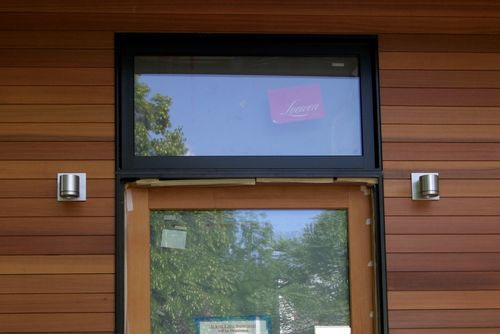
We are now beginning to look at interior lighting schemes. The challenge is to move beyond a sea of recessed “can” or track lights and arrive at something a bit more interesting at a reasonable price. In the quest to control energy consumption, the wisest choice would be compact fluorescent fixtures. However, we are still having a hard time getting over their start-up behavior, light color, color rendering, and a “lack of brightness”.
There are trade-offs to think of with can light sizes too: six inch and up are readily available and cheap. Most smaller sizes, which are nicer and more subtle are more expensive, have limited wattage, and require more fixtures. Although low voltage would be a choice to get smaller fixtures with bright lights, we want to avoid both the cost as well as the sparkle and glare that they give off.
For more images, check out our renderings on Flickr





